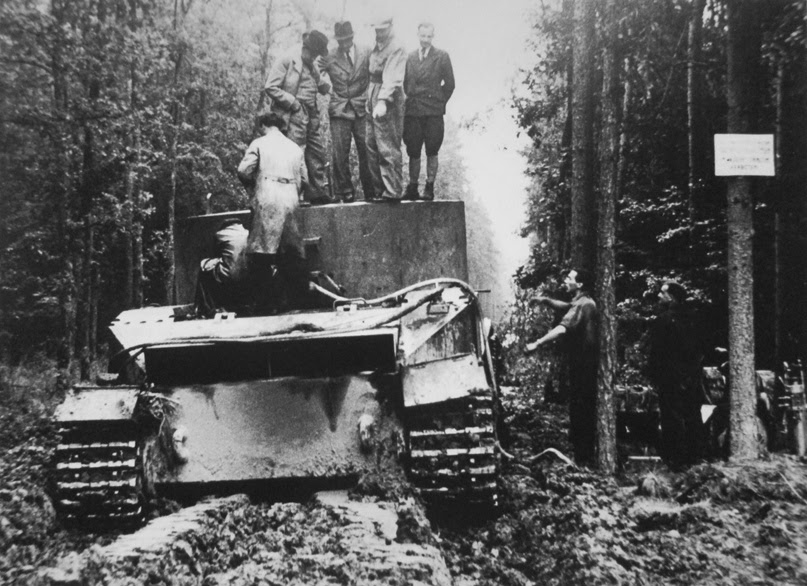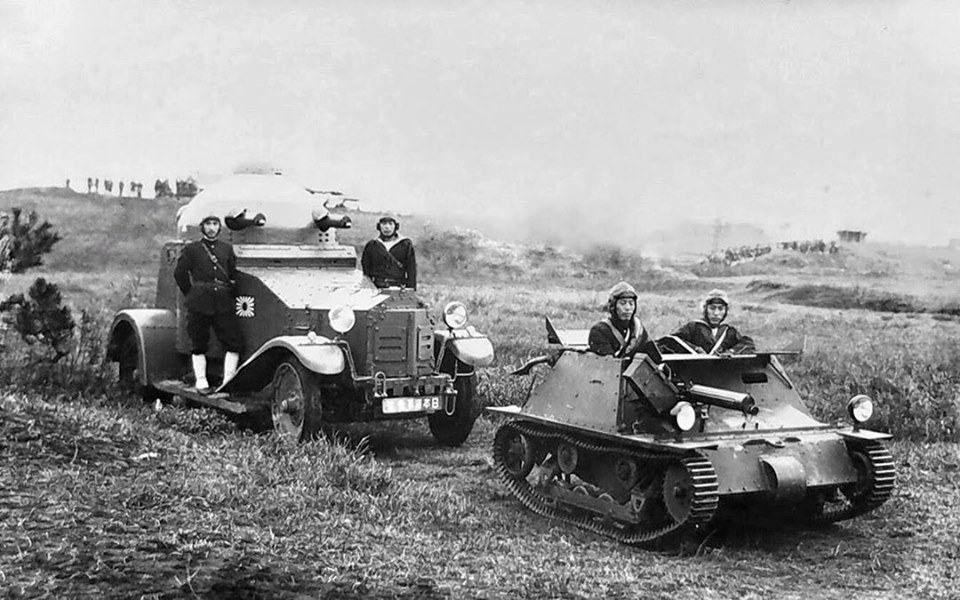Hello all, here is today's article posted on TheArmoryLife.com. It is titled “Sherman Tanks: Behemoths of the Pacific Theater” and can be found at https://www.thearmorylife.com/sherman-tanks-in-the-pacific-theater/.



They were Top Dog in the PTO ( Pacific Theater of Operations) but were outgunned in Europe. General Patton’s suggestions for the Sherman fell upon deaf ears. It wasn’t until later in the war that the decision makers finally listened and ordered the upgrades.Hello all, here is today's article posted on TheArmoryLife.com. It is titled “Sherman Tanks: Behemoths of the Pacific Theater” and can be found at https://www.thearmorylife.com/sherman-tanks-in-the-pacific-theater/.

My father in law was in the pacific theater and he thought the flame thrower tanks and man carried flame throwers were the grestest tools they had at thier disposal for clearing out all the holes the enemy hid in there. He said many times they saved a lot of GI lives.
I think he said the seabees modified tanks into them not sure of that.
Shermans were the best overall tank in North Africa bar none. There were only about 20 Tigers in NA late in the campaign with most being broke and unable to make it to the battlefield and those that did, did not fare well. Italy saw British, Canadian and US Shermans handling German tanks quite well. By the time of Normandy units were confident of outmaneuvering and using the 75mm to their advantage. Of note: there were about 200 Shermans in England with the high velocity 76mm and the tank battalion commanders didn't want them because load plans, serials, and waves had already been planned and they didn't want the rushed training requirement for the new vehicles. I think their confidence was misplaced in the head to head confrontations in the hedgerows, but once they broke free to maneuver it was a different story.They were Top Dog in the PTO ( Pacific Theater of Operations) but were outgunned in Europe. General Patton’s suggestions for the Sherman fell upon deaf ears. It wasn’t until later in the war that the decision makers finally listened and ordered the upgrades.
The Panthers and Tigers had poorly-designed transmissions and were prone to over-heating.I remember reading about the problems the crew members and maintenance crews had with the Panthers. They rushed them into the fight with issues. Another problem was with the variates of the Tiger. They had so many variations that parts became a major issue.
The Sherman’s and the T-34s didn’t have that issue.


Add to muddy periods especially cold, muddy periods: the overlapping roadwheel design led to jammed up suspensions and additional maintenance time. Also, the overlap design meant they had to remove three or four roadwheels to change one suspension arm.The Panthers and Tigers had poorly-designed transmissions and were prone to over-heating.
he Panther and Tiger tanks, while formidable in terms of armor and firepower, suffered from frequent transmission failures due to their heavy weight and complex design. The transmissions were often undersized and used straight-cut gears, which were prone to premature wear and tear. Additionally, material shortages during the war made gears more brittle, further contributing to failures.
View attachment 85289
Here's a more detailed breakdown:
- Undersized for Heavy Weight:
Both tanks' weight was significantly above the capacity of the available German transmissions.
- Straight-Cut Gears:
The use of straight-cut gears, instead of more robust helical gears, resulted in high tooth loads and premature wear.
- Material Shortages:
The German war effort's material shortages led to the use of less durable alloys in gears, making them more prone to breaking.
- High Torque Turning:
The high-torque method used to turn the tanks could overload the final drive and lead to failures.
- Early Models:
Early models were particularly plagued by transmission issues, as drivers were still learning how to operate the tanks without putting excessive strain on the engine and transmission.
- Fixes:
Some fixes, like replacing straight-cut gears with epicyclic gearboxes, were attempted to distribute the load across more teeth, but these were not always fully implemented.
- Third Gear Failures:
The third gear was particularly prone to failure, sometimes requiring the driver to skip gears to avoid further damage.
- Muddy Periods:
Extended periods of driving in mud could also stress the transmission, leading to damage.
- Main Clutches:
In some cases, the main clutches were also damaged during muddy periods.

From the Editor: Panther Reliability
(This piece was originally posted on my old blog on Feb 18, 2014. We are slowly in the process of migrating the popular material from the blog over to here.) Over at the World of Tanks forum, there…tankandafvnews.com

Third Tiger Out
A blog about World War II era archive documents, primarily dealing with armoured warfare.www.tankarchives.com
These were still "gassers", but with the redesigned heatshields. The 90mm was a good, old-fashioned, percussion fired rifle that was a joy to shoot. I trained on the M48A2C, which was the same vehicle, but with the excellent M17 Coincidence Rangefinder that would find it's way onto the M60 series. I served on several generations of tank and have trigger time on the 90mm, the M68 105mm and the 152mm gun/launcher of the M551 & M60A2. If I could have a day at the range tomorrow with any of the three it would be the 90mm.Couple of wars later..but n the Nam the USMC was using the M48A2. The 90mm rifle made short work of any fortifications in direct fire mode, and I say this as an arty FO. No need to check for clearance for fire!!! Only problem was in thickngrowth, the armor wasn’t able to defeat a B40/RPG 2.
FWIW. During the Gulf War, was in the Cal Guard stationed at Camp Robert’s, our side Paso Robles. There was a production line converting the older models to the A5 variant. Far as I know, none of them were used and were probably scrapped a couple of years later.These were still "gassers", but with the redesigned heatshields. The 90mm was a good, old-fashioned, percussion fired rifle that was a joy to shoot. I trained on the M48A2C, which was the same vehicle, but with the excellent M17 Coincidence Rangefinder that would find it's way onto the M60 series. I served on several generations of tank and have trigger time on the 90mm, the M68 105mm and the 152mm gun/launcher of the M551 & M60A2. If I could have a day at the range tomorrow with any of the three it would be the 90mm.
Those stars big enough for everybody?
A5's as far as I know are all upgunned to the 105mm. I think quite a few went to NG units. An upgunned M48 could hold it's own against it's presumptive enemy through most of the '70's.FWIW. During the Gulf War, was in the Cal Guard stationed at Camp Robert’s, our side Paso Robles. There was a production line converting the older models to the A5 variant. Far as I know, none of them were used and were probably scrapped a couple of years later.

 laststandonzombieisland.com
laststandonzombieisland.com
Right…there were some other mods. As I said, I wonder where they all went. There seemed to be quite a few on the deck.A5's as far as I know are all upgunned to the 105mm. I think quite a few went to NG units. An upgunned M48 could hold it's own against it's presumptive enemy through most of the '70's.
Sent over seas as FMS, and/or dropped offshore as artifical reefs.Right…there were some other mods. As I said, I wonder where they all went. There seemed to be quite a few on the deck.
